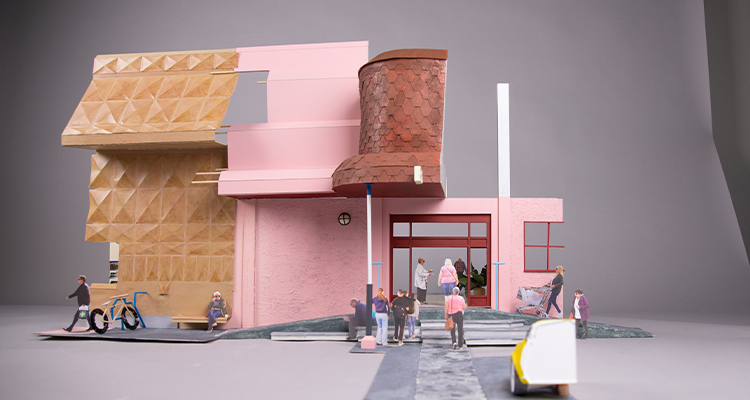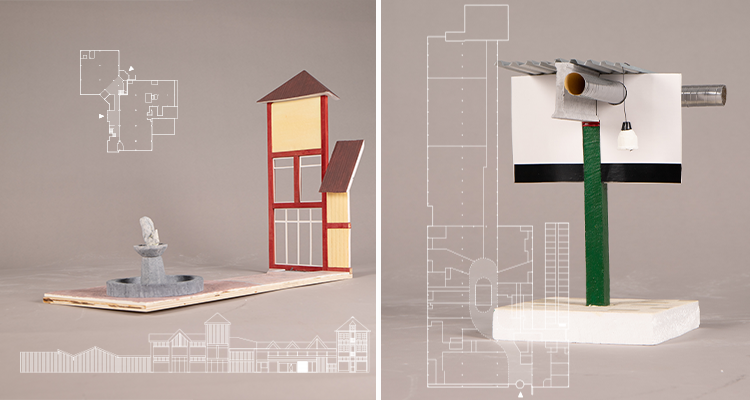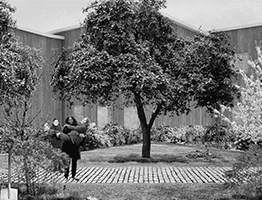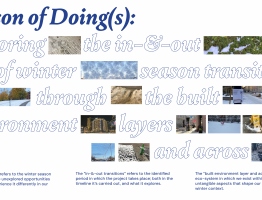Diplomprosjekt
Høst 2022
Institutt for arkitektur
This project aims to highlight the rural mall in Norway as a vernacular architecture based on its social role within the local community. Through the lens of cultural heritage, we explore the rural shopping mall as a building type and place of gathering. Despite a considerable degree of standardization, the rural malls nevertheless have individual characteristics. In many towns around Norway, the mall is the only available meeting place. As such, it is undoubtedly of local importance and deserves to be taken seriously as an architectural heritage.
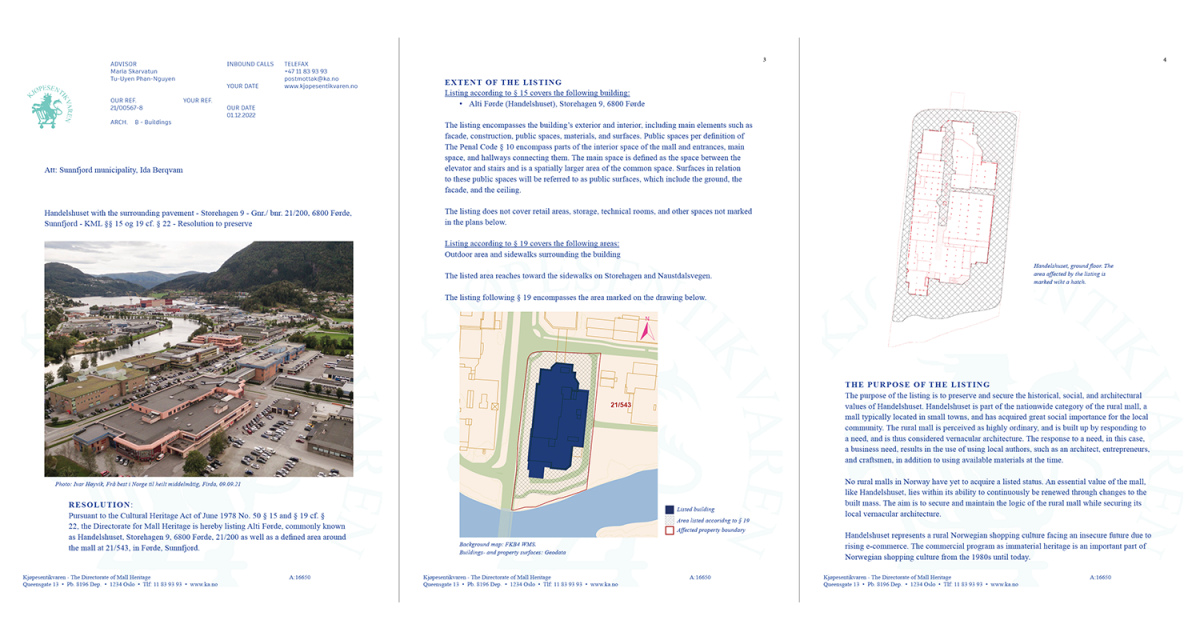
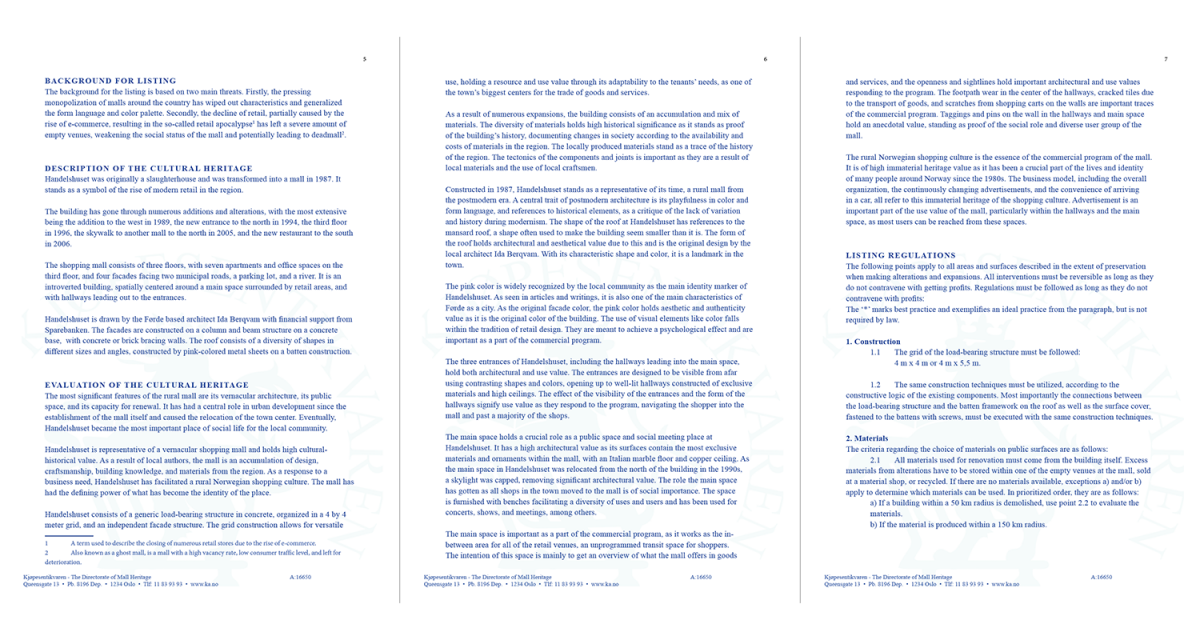

One of the most prominent traits of the rural malls is the need to be in constant change to adapt to the needs of its tenants and keep their relevance. Today, preservation often leads to static buildings, in which this project seeks to explore ways of preserving by allowing for change while maintaining architectural characteristics. Our main question is as follows: How can we secure the rural mall’s social and architectural values? And how can this be done by using existing preservation practices? By establishing a set of criteria, explored in model building, we want to test how regulations can be used as architectural tools. In Norway, the highest form of preservation is a formal listing at state level. Based on guidance provided by the Directorate of Cultural Heritage, the set of criteria is presented through the act of listing.
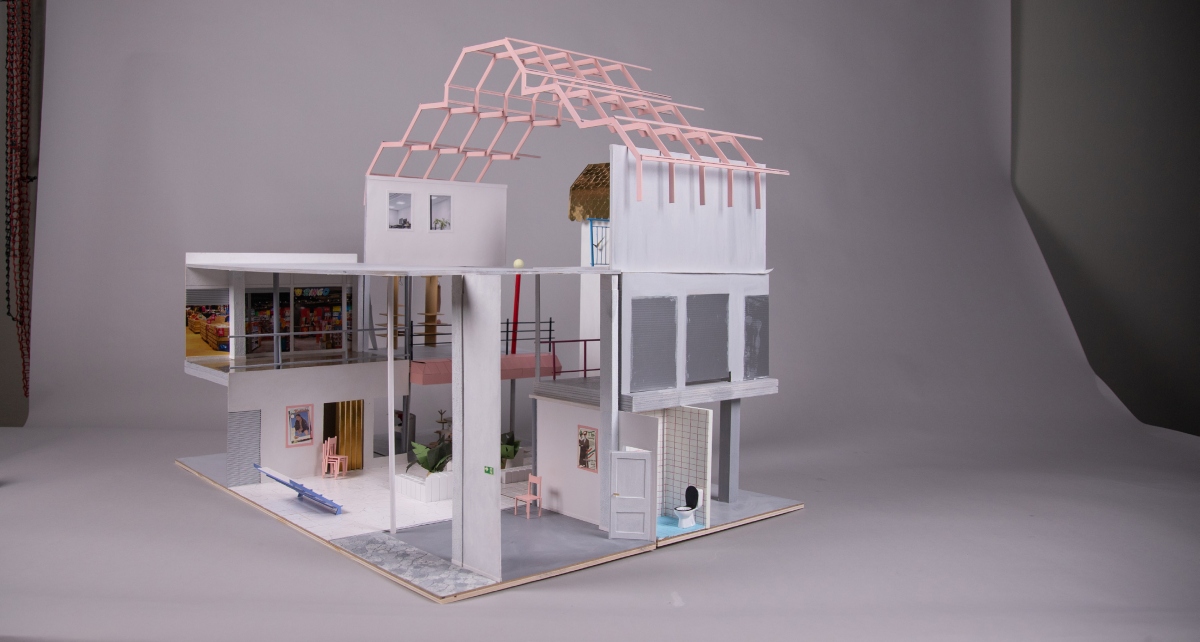
In Norway the first indoor malls were erected in the 1960s and 60 years later, 572 malls had spread all over the country. Over time Norway has become the country in Europe with the most square meters of shopping mall space per inhabitant. Many places in rural Norway, shopping malls have dominated the townscapes since the 1980s. These highly visible but introverted landmarks, surrounded by a pool of cars on a field of asphalt, and automatic doors inviting you in, have gotten a central role in urban development. In many towns, the establishment of these malls formed a new town center. Bigger, newer and fresher facilities persuaded many businesses to move their stores to the mall. Consequently, people flocked to the mall, leaving the traditional town centers behind. As a result, the mall has become the most important public meeting place in town, and a natural part of people’s everyday life; casual hangouts, social activities and encounters, events, concerts, and daily duties - everything happens at the mall.

Maria Skarvatun / maria.skarvatun@gmail.com
Tu-Uyen Phan-Nguyen / tuuyenpn@gmail.com


